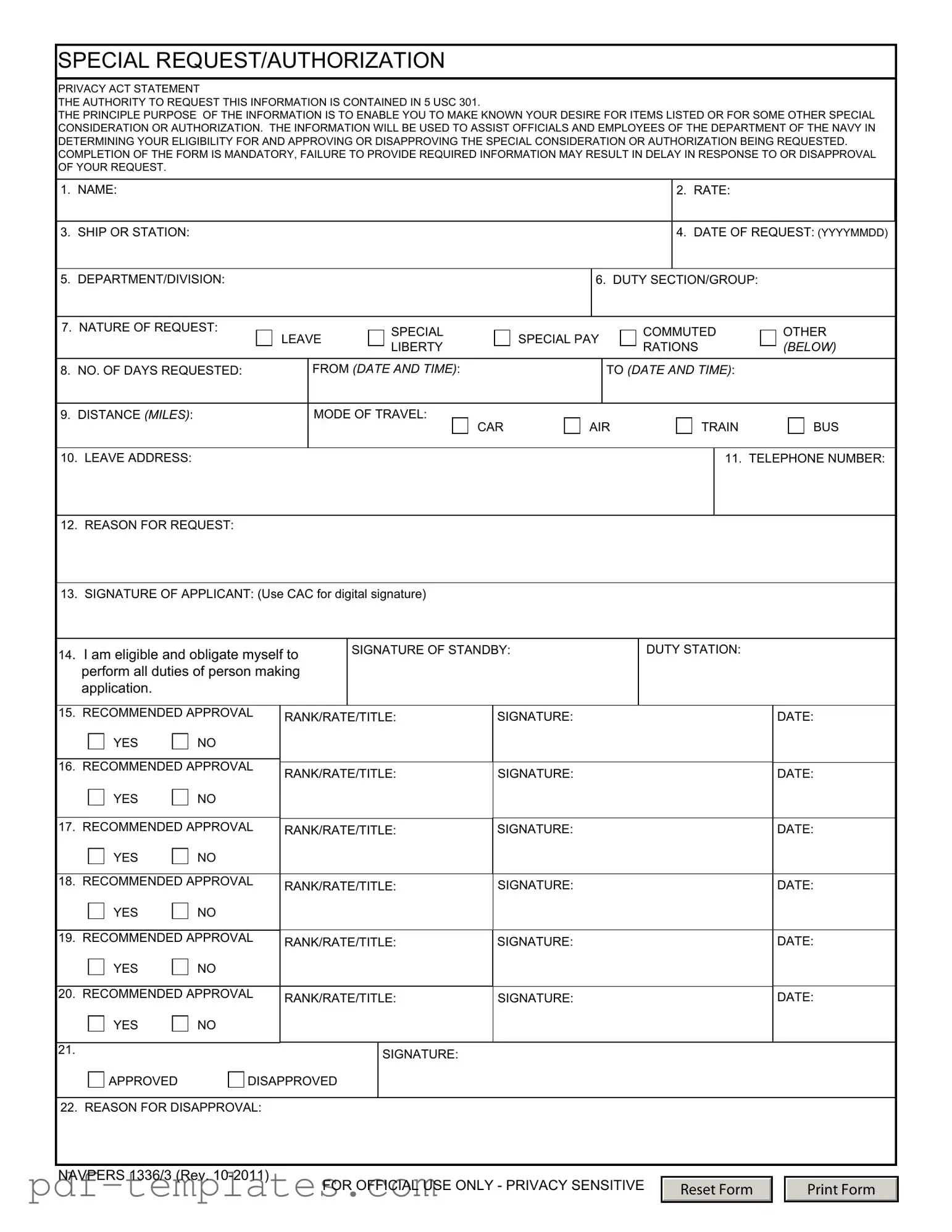The DD Form 214, also known as the Certificate of Release or Discharge from Active Duty, serves as a similar document to the Navpers 1336 3 form. This form is essential for service members as it provides a comprehensive record of their military service, including dates of service, awards, and discharge status. Just like the Navpers 1336 3, the DD Form 214 requires accurate information to ensure eligibility for benefits and services. Both forms are critical for transitioning service members, helping them to secure necessary resources and support after leaving active duty.
In the realm of estate planning, the California Transfer-on-Death Deed form provides a useful alternative to traditional methods of passing on property, as seen at https://formcalifornia.com. This document simplifies the transfer process, ensuring that the property is directed to the intended beneficiary without the complications of probate or a will, thereby offering a streamlined solution for those looking to manage their real estate effectively.
Another document that parallels the Navpers 1336 3 is the Leave Request Form, often used across various branches of the military. This form is designed for service members to formally request leave, detailing the type of leave, duration, and reason for the request. Similar to the Navpers 1336 3, the Leave Request Form must be completed with precise information to facilitate approval from commanding officers. Both documents aim to maintain operational readiness while allowing service members to take necessary time off.
The Travel Authorization Form is another document that shares similarities with the Navpers 1336 3. This form is used to request approval for official travel, outlining the purpose, duration, and estimated costs. Like the Navpers 1336 3, it requires specific details to ensure that the travel is justified and authorized. Both forms help streamline processes within the military, ensuring that requests are properly documented and reviewed by the appropriate authorities.
The Navy Leave and Earnings Statement (LES) is also comparable to the Navpers 1336 3. While the LES provides a summary of a service member's pay and deductions, it also includes information about leave balances. This document is essential for service members to track their leave entitlements and understand their financial situation. Both the LES and the Navpers 1336 3 are vital for maintaining accurate records and ensuring that service members can effectively manage their leave and financial benefits.
Lastly, the Request for Personnel Action (SF-52) is similar to the Navpers 1336 3 in that it is used to initiate actions related to personnel changes, such as promotions or transfers. This form requires detailed information about the employee and the requested action, mirroring the need for accuracy in the Navpers 1336 3. Both documents serve to facilitate important decisions regarding personnel management, ensuring that all necessary information is collected and reviewed by the appropriate officials.
